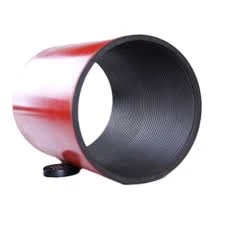- Afrikaans
- Albanian
- Amharic
- Arabic
- Armenian
- Azerbaijani
- Basque
- Belarusian
- Bengali
- Bosnian
- Bulgarian
- Catalan
- Cebuano
- Corsican
- Croatian
- Czech
- Danish
- Dutch
- English
- Esperanto
- Estonian
- Finnish
- French
- Frisian
- Galician
- Georgian
- German
- Greek
- Gujarati
- Haitian Creole
- hausa
- hawaiian
- Hebrew
- Hindi
- Miao
- Hungarian
- Icelandic
- igbo
- Indonesian
- irish
- Italian
- Japanese
- Javanese
- Kannada
- kazakh
- Khmer
- Rwandese
- Korean
- Kurdish
- Kyrgyz
- Lao
- Latin
- Latvian
- Lithuanian
- Luxembourgish
- Macedonian
- Malgashi
- Malay
- Malayalam
- Maltese
- Maori
- Marathi
- Mongolian
- Myanmar
- Nepali
- Norwegian
- Norwegian
- Occitan
- Pashto
- Persian
- Polish
- Portuguese
- Punjabi
- Romanian
- Russian
- Samoan
- Scottish Gaelic
- Serbian
- Sesotho
- Shona
- Sindhi
- Sinhala
- Slovak
- Slovenian
- Somali
- Spanish
- Sundanese
- Swahili
- Swedish
- Tagalog
- Tajik
- Tamil
- Tatar
- Telugu
- Thai
- Turkish
- Turkmen
- Ukrainian
- Urdu
- Uighur
- Uzbek
- Vietnamese
- Welsh
- Bantu
- Yiddish
- Yoruba
- Zulu
what are the differences between casing and tubing?
Differences Between Casing and Tubing in Oil and Gas Operations
In the oil and gas industry, two critical components play essential roles in the extraction process casing and tubing. Though these terms are often used interchangeably, they represent very different functions and features within a well. In this article, we will explore the key differences between casing and tubing, their respective purposes, and their significance in ensuring the efficiency and safety of oil and gas operations.
Definition and Purpose
Casing refers to the series of steel pipes that are installed in the wellbore after it has been drilled. Its primary function is to stabilize the well, protect it from the surrounding geological formations, and prevent the well from collapsing. Casing also serves as a barrier against fluids that may flow from the rock formations into the well, thus mitigating contamination risks and protecting groundwater.
On the other hand, tubing is a smaller diameter pipe that is installed inside the casing. Its primary role is to transport oil or gas from the reservoir to the surface. Tubing allows for the controlled extraction of hydrocarbons and can be easily removed and replaced for maintenance or repair purposes.
Structural Differences
The structural differences between casing and tubing are significant. Casing pipes are typically much thicker and heavier than tubing pipes. This added thickness provides the necessary strength to withstand the pressures and stresses imposed by the geological formations surrounding the well. Casing is designed to endure the harsh conditions of the subsurface environment, including potential corrosion and temperature changes.
Conversely, tubing is lighter and has thinner walls, as it does not need to support the same level of stress as casing. The tubing’s thinner construction allows for easier manipulation and installation within the casing, as well as reduced costs during production.
what are the differences between casing and tubing?

Installation Process
The installation process for casing and tubing also varies considerably. After drilling, casing is set in place and cemented to the wellbore to create a secure seal. The cement serves to hold the casing in place and further reinforces the structural integrity of the well. This process creates a multi-layered barrier, ensuring that the well is both stable and protected.
In contrast, tubing is inserted after the casing has been installed and cemented. The tubing is then connected to various equipment at the surface, such as pumps and separators, enabling the extraction process to commence. Unlike casing, tubing may be pulled out of the well (a process known as workover) to facilitate repairs or upgrades without the need for major interventions.
Maintenance and Lifespan
Both casing and tubing require regular maintenance, but their lifespans and maintenance practices differ. Casing is generally designed to last for the entire life of the well, while tubing may require replacement several times throughout the well’s production life due to wear and tear from the constant flow of hydrocarbons and associated fluids.
Tubing failures can lead to significant production losses and safety risks, necessitating timely inspection and maintenance. Casing integrity is also monitored, as any failure can compromise the entire well and lead to hazardous environmental impacts.
Conclusion
In summary, casing and tubing are fundamentally different components of oil and gas wells, each serving distinct functions. While casing provides the structural integrity and protection necessary for a safe and stable well, tubing is essential for facilitating the efficient extraction of hydrocarbons to the surface. Understanding these differences is vital for professionals in the oil and gas industry, as it directly impacts well design, safety protocols, and production efficiency. An appreciation for the roles these components play ensures better decision-making and operational success in petroleum engineering.
-
Tubing Pup Joints: Essential Components for Oil and Gas OperationsNewsJul.10,2025
-
Pup Joints: Essential Components for Reliable Drilling OperationsNewsJul.10,2025
-
Pipe Couplings: Connecting Your World EfficientlyNewsJul.10,2025
-
Mastering Oilfield Operations with Quality Tubing and CasingNewsJul.10,2025
-
High-Quality Casing Couplings for Every NeedNewsJul.10,2025
-
Boost Your Drilling Efficiency with Premium Crossover Tools & Seating NipplesNewsJul.10,2025







